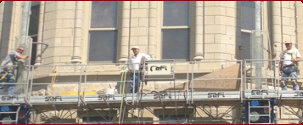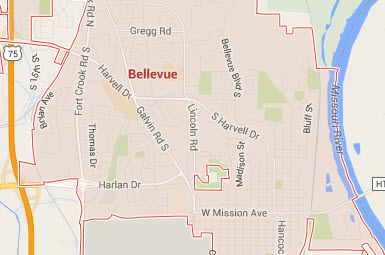Brick Repair
Most damages to your brick are caused by water penetration and expansion and contraction due to changes in temperature. Building movement or settlement can increase cracking if there are no or inadequate control joints. Control joints are typically installed at the end of windows, doors or other openings and also at various intervals throughout the masonry. The control joint is used to control movement cracking both vertical and horizontal.
Historical and even some contemporary masonry may have no flashing or control joints installed. A common brick repair problem on an older home is no control joint at a window head. The brick jamb becomes a straight line and the brick usually crack along the straight line above the window head. This allows moisture to penetrate to the inside of the brick. Cracks as small as .005” will allow water into the wall. (human hair is approx. .003”) This may not have happened if there was a control joint.
Typically flashings are at the base of the wall and at the head of openings. If your brick wall has no flashings water penetration can’t escape to the surface. If flashings were installed properly at the head of the window any water penetration could escape thru the weep vents to the surface of the wall where it would naturally dry. Water that is trapped in the wall can cause further brick cracking, deteriorated mortar joints and brick spalling. It can also work its way inside the wall where it can create mold and damage drywall.
When we prepare an estimate, we will identify spalled brick, broken brick and deteriorated brick that need to be removed and replaced. Many times the face of the brick is loose but still in place so we will lightly tap or sound the brick to identify any additional spalled brick that need to be removed.
Cut out mortar joints surrounding the brick to be removed.
If we encounter OPC -(Ordinary Portland Cement) we will use angle grinders and make a relief cut thru the center line of the OPC mortar which allows easier removal for the balance of the mortar joint.
If you have a softer lime based mortar more traditional methods for mortar removed can be used such as a hammer and plugging chisel.
Our bricklayers take great care in the use of mechanical tools so as not to damage the brick.
Find bricks to match
This process can be time consuming for older brick. Color is the key more than texture or size in finding a good brick match. The mortar color needs to be a good match as it will also effect the color of the brick.
Most contemporary brick can be found thru local brick suppliers who in turn have access to brick yards throughout the country. Historical brick can sometimes be obtained thru a brick salvage yard or an online site such as Craigslist. Many historical brick are taller and longer that today’s modular brick. Laying a modular brick into a historical brick wall usually leaves you with larger unsightly mortar joints. There are brick suppliers back east who make oversized brick with many of the traditional colors. An oversized brick can replace a historical brick if needed.
Match the new mortar in content and color
MCI will analyze and determine the content of the mortar before we lay brick or repoint. Most modern mortars can be matched and purchased thru local masonry suppliers. On historical masonry we design and hand mix our mortars to match. This involves matching the existing sand, adding mortar pigments if needed and repoint with naturally hydraulic lime. We will attempt to find the sand locally. By volume sand is the largest portion of the mortar mix. Please visit our Mortars page for more info on NHL
Wash down the bricks
We use the appropriate cleaner for your masonry surface. We always test a sample of cleaner on the brick before washing the entire wall and using the mildest cleaner and dilution that still give effective cleaning results.



